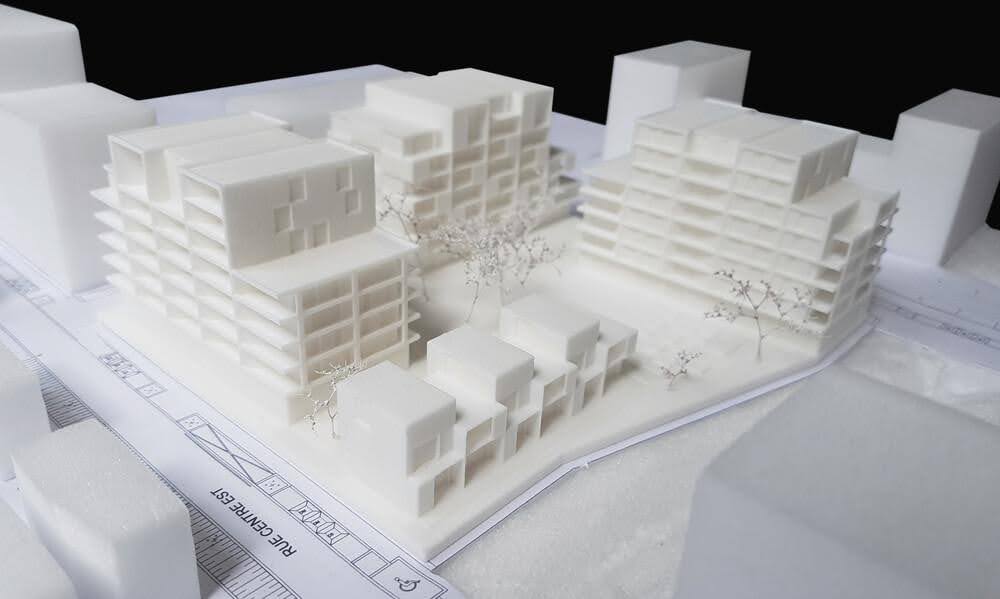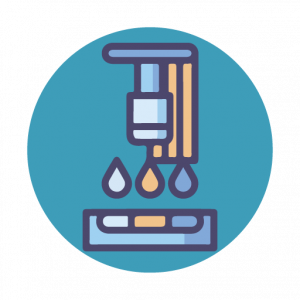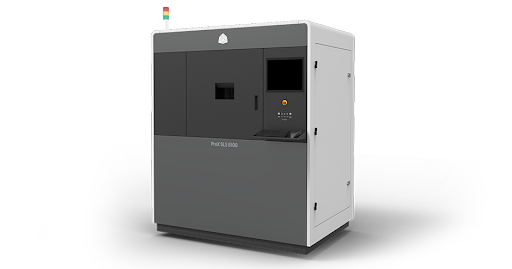
3D Systems Prox SLS 6100 3D Printer/Courtesy: 3D Systems
Selective Laser Sintering (SLS) 3D printing technology was invented and patented by Carl Deckard, an undergraduate student at the University of Texas, and his academic advisor Dr. Joe Beaman in the 1980’s.
Since then the technology has been one of the most popularly used 3D printing technologies to produce complex polymer designs.
ABOUT SLS 3D PRINTING TECHNOLOGY
Selective Laser Sintering (SLS) 3D printing technology falls under the powder-bed fusion category of 3D printing technology as defined by ASTM. Selective Laser sintering also known as Laser Sintering uses laser technology to fuse small particles of powdered elastomer material to form a three-dimensional object. The convenience of the technology allows it to be used for a variety of applications from prototyping to end-use production.
An SLS 3D printer consists of the below components:
- Laser: Powerful CO2 laser is used to heat the powdered particles together
- Scanning System: To accurately guide the laser to the desired location to trace the model geometry.
- Build Chamber: The chamber where the actual printing process takes place. In most industrial SLS 3D printers the build chamber is filled with an inert gas like nitrogen.
- Powder Feeder: This feeder houses the powdered material to be used for the printing process.
- Recoater/Roller/Leveller: The recoater is responsible for delivering the powder from the feeder onto the build platform.
DESIGN GUIDE – SELECTIVE LASER SINTERING (SLS)
WORKING OF AN SLS 3D PRINTER
The working of an SLS 3D printer can be segregated into three phases:
- Pre-Printing
Before the start of the 3D printing process, the powdered material to be used is filled in the powder feeder. The build chamber is sealed and an inert environment is created and at the same time, the entire chamber is also heated. This heating primes the material.
- 3D Printing
Once the initial conditions are set, the process starts with the movement of the recoater that brings the material from the powder feeder and spreads it evenly on the build platform. This process is followed by the activation of the laser. The laser is flashed onto the scanning system and the scanning system, according to the geometry defined in the G-code file, traces the path of the laser onto the first layer of the powdered material.
The powdered material particles are sintered (heated just below their melting temperature). This controlled heating of individual particles ensures that the outer layer of the particles starts to liquefy and this allows adjacent particles to fuse. This process is carried out for the complete layer and thus the first layer is formed.
After the completion of the first layer, the laser deactivates, the build chamber moves down by a defined distance to allow space for the second layer of powder which is brought by the recoater and spread on top of the first layer. The laser then again springs into action and prints the second layer.
This process continues repeatedly till the entire object is created.
- Post-Printing
When the 3D printing process ends, the object is allowed to cool down in the build chamber itself before it is removed for further processing. The entire chamber is removed and the printed object is scoured in the volume of unused power.
This object is now laced with unused powder and so this powder is removed by brushing off all the excess powder surrounding the part. Excess powder stuck in critical areas is removed by blasting compressed air.
This is the final part, but as per the application, further post-processing like sanding, bead blasting, lacquering, painting, etc. can be carried out.
MATERIALS – SELECTIVE LASER SINTERING (SLS)
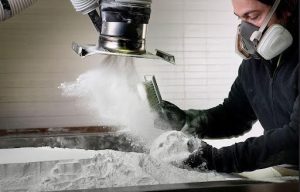
Below we list down the popular materials used in SLS 3D printing.
Samples 3D printed in PA11 & PA12/Courtesy: Sculpteo
Polyamide 11 and 12 powders (also known as Nylon 11 & 12) are two of the most widely used materials in SLS 3D printing technology. These were the first materials to be qualified for SLS 3D printing and they still rule most of the applications.
The reason for its extensive use is the fact that it is a popular material used widely in traditional applications. Nylon is known for its strength and flexibility properties. It is also a lightweight material. Additionally, it also exhibits great impact, heat, and chemical resistance. It also remains stable in demanding conditions dictated by UV light, dirt & water.
Both Nylon 11 & 12 are used for prototyping and production
The most common material for selective laser sintering is nylon, a popular engineering thermoplastic beloved for its lightweight, strong, and flexible properties. Nylon is stable against impact, chemicals, heat, UV light, water, and dirt, making it ideal for both rapid prototyping and production.
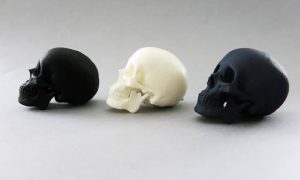
Alumide
Alumide/Courtesy: Sculpteo
Alumide which is an Aluminum-filled nylon material is also a commonly used material in SLS 3D printing. Alumide is highly resistant to heat and is used to build non-porous objects. It has a metallic look and provides high stiffness.
Additionally, alumide objects can be easily machined. Major applications of alumide are in wind tunnel testing in the automotive industry, illustrative models with a metallic appearance, jig manufacturing, and small production runs.
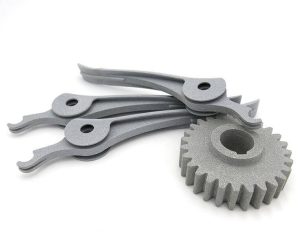
APPLICATIONS OF SLS 3D PRINTING TECHNOLOGY
Prototyping
Prototyping is one of the most common applications of any 3D printing technology and more so of SLS technology. The fact that the technology eliminates support structures makes it desirable to be used for post-processing to eliminate the tedious support removal process.
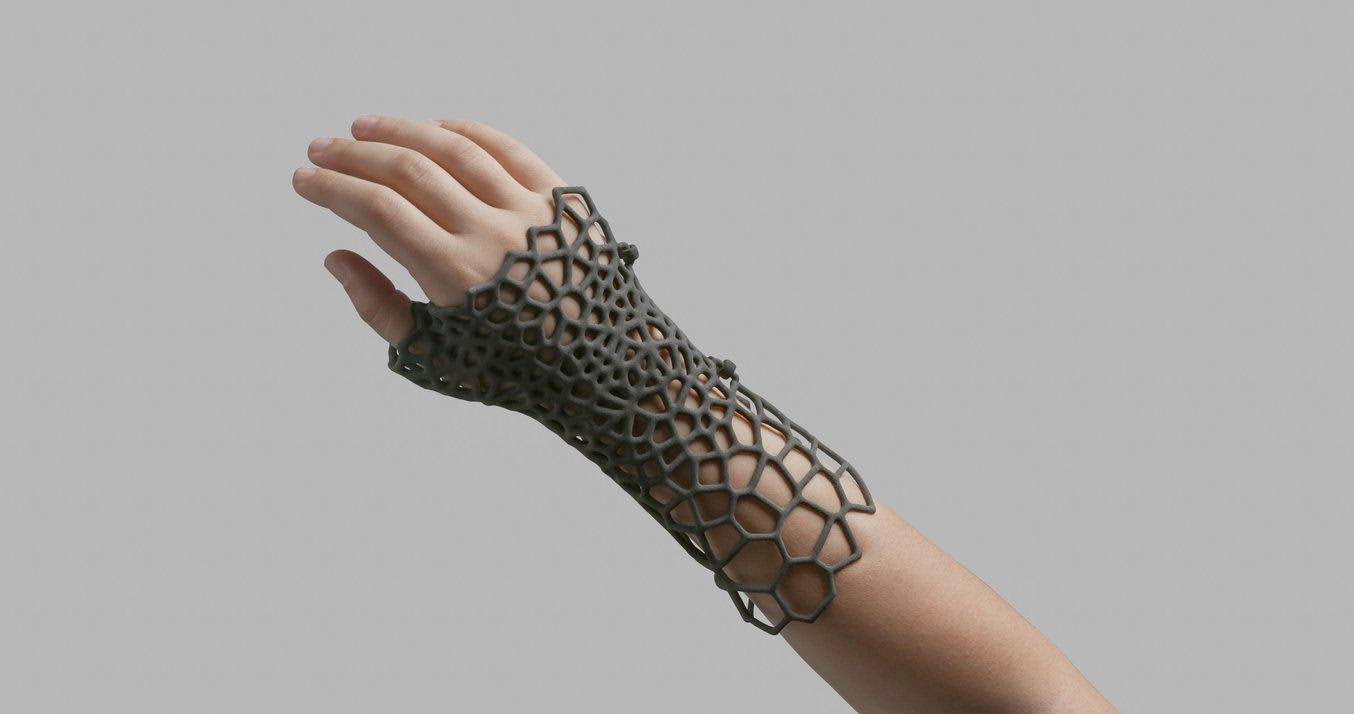
Hand splint designed with a complex pattern to reduce weight/Courtesy: Formlabs
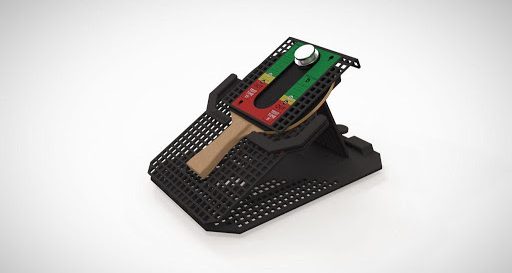
Aerospace
The aerospace industry is widely using the SLS 3D printing technology to make multiple aircraft interior parts. Emirates, the largest airline in the UAE, is using SLS technology to 3D print aircraft cabin components including video monitoring shrouds and air vent grills.
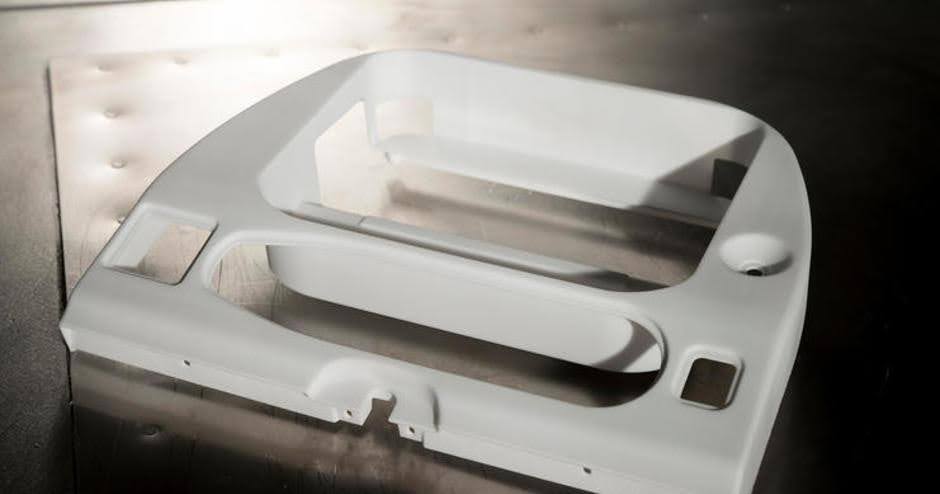
Emirates is 3D printing aircraft cabin components for better fuel economy/Courtesy: 3D Systems
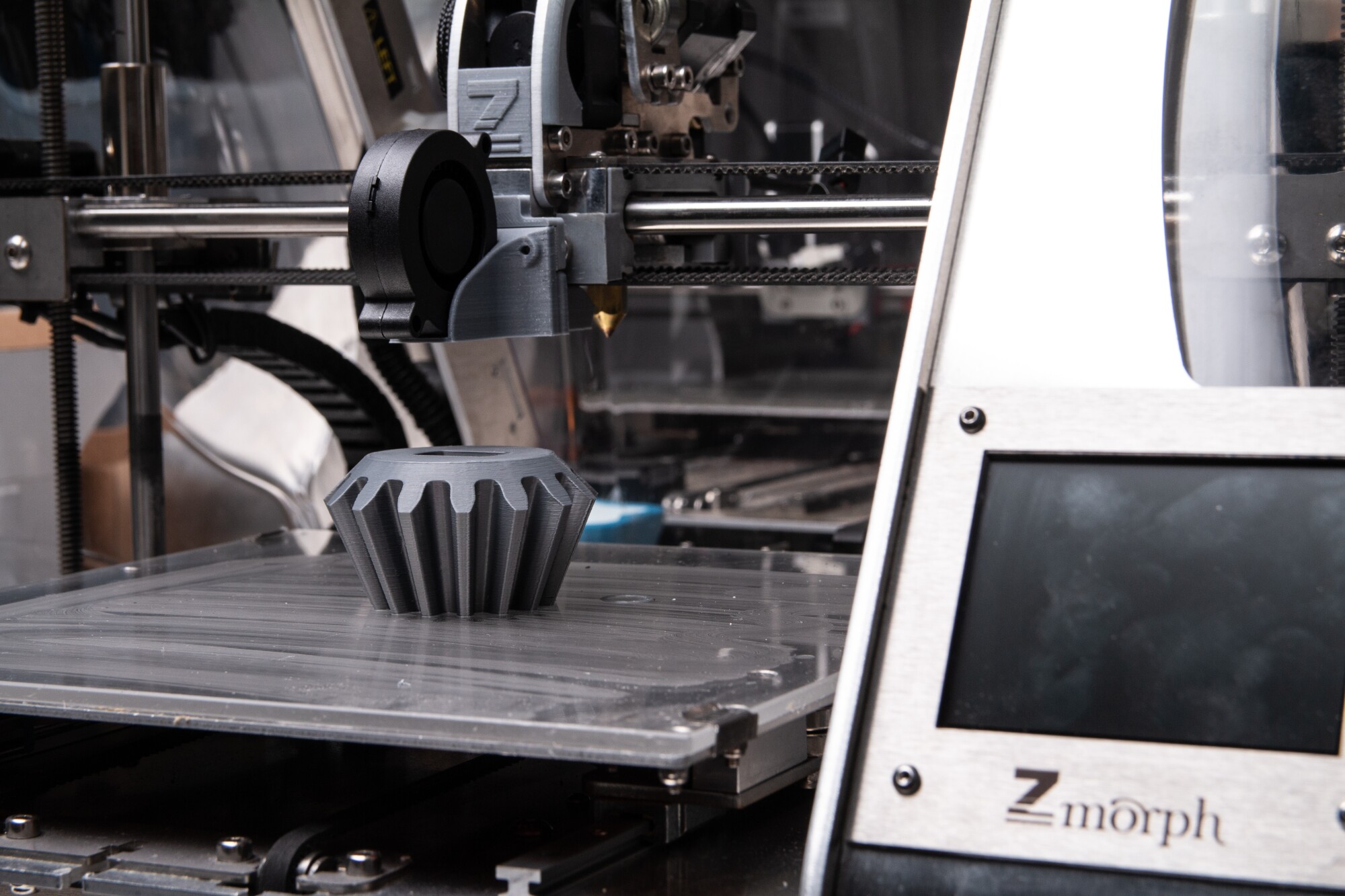
Computerised 3D Printing
Consumer Goods
Chanel, the French fashion giant, has been a pioneer in the use of SLS 3D printing for mascara brushes. The SLS technology resulted in improved adhesion of the mascara to the lashes and so the company is now 3D printing millions of such brushes.
SLS has also been instrumental in manufacturing insoles of footwear. The Chinese sportswear and footwear manufacturing company is using SLS 3D printing technology to create the midsole and sole in its FUTURE FUSION PEAK3D sneakers.
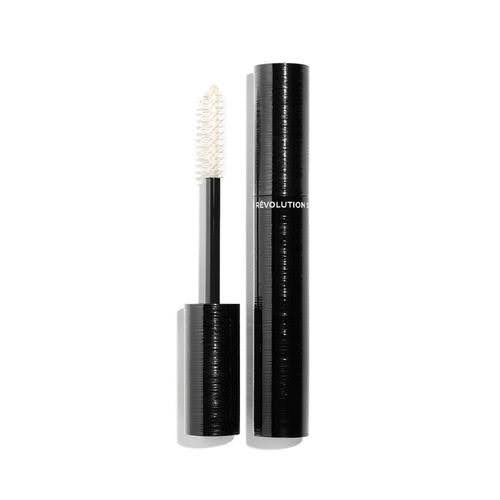
3D Printed Mascara Brush/Courtesy: Chanel
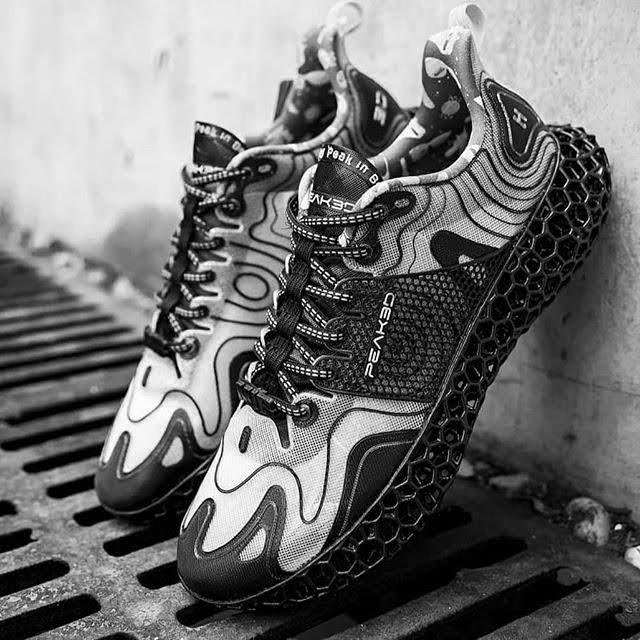
3D Printed Shoes/Courtesy: Peak Sports
Motorsports
SLS 3D printing technology can be used for rapidly developing aerodynamic parts for motorsports vehicles so that they can be tested in wind tunnel tests. Any modification required can be rapidly incorporated through multiple designs and numerous new parts can be 3D printed simultaneously to be tested again. Such rapid manufacturing is only possible through SLS 3D printing.
Such testing is carried out by Alfa Romeo’s Sauber Formula One (F1) team.
Assemblies Production
Another advantage resulting from the elimination of supports is the fact that direct assemblies can be produced through SLS 3D printers. It eliminates the need for manufacturing multiple parts and assembling them later. Sully assembled parts can be formed and this is a great application leading to time and cost savings.
Batch Production
Since SLS uses a powdered material chamber, various parts can be simultaneously 3D printed without hampering the quality of any part. The bigger the build chamber, the higher the number of parts produced in one go. Thus it is a great option to mass-produce 3D printed parts.
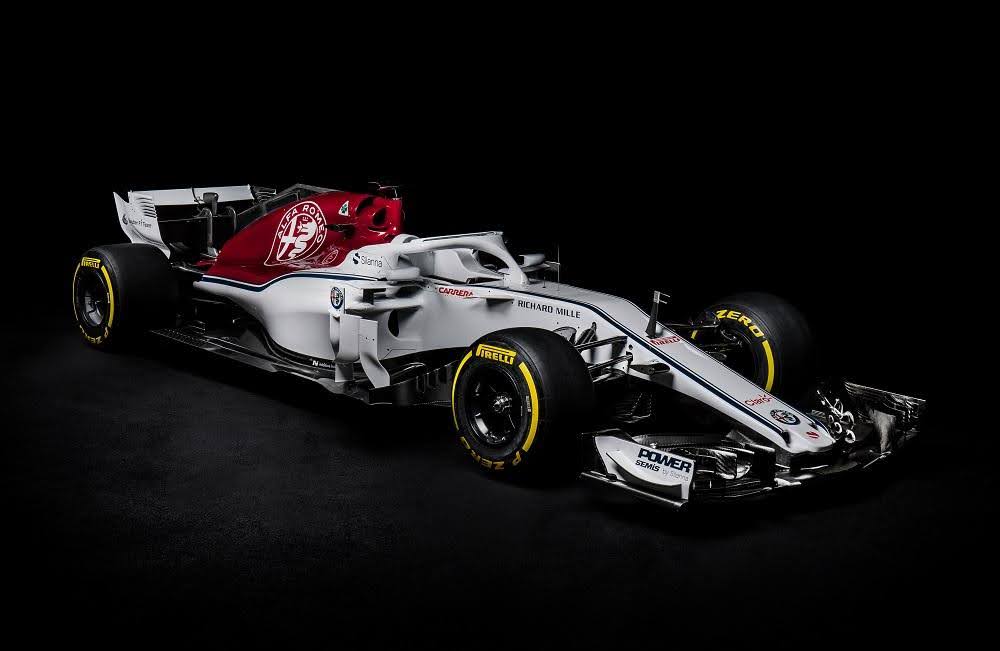
Alfa Romeo F1 Race Car/Courtesy: Sauber Motorsport AG
Model Making
The model-making industry has a lot of use for SLS 3D printing technology. Since models are largely made in limited quantities, that have to be colored and painted and have complex features that cannot be manufactured with support structures, the SLS technology comes as a boon to in this application.
